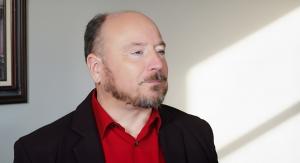Mark Erjavec Calls for a New Systems-First Blueprint for Ukraine’s Reconstruction
Mark Erjavec expands on recent analysis and presents a systems-first path for Ukraine’s reconstruction focused on stability and modernization.
Reconstruction succeeds when governance is transparent, infrastructure is integrated, and communities can see progress in real time.”
EDINA, MN, UNITED STATES, November 26, 2025 /EINPresswire.com/ -- With fresh rounds of peace negotiations beginning to shape expectations around Ukraine’s future, Mark Erjavec says the country is entering a critical planning window—one defined not by diplomacy alone but by the structural decisions made right now. As stability signals emerge, he argues that Ukraine’s reconstruction must shift from short-term recovery to a long-horizon, systems-first blueprint designed for resilience.— Mark Erjavec
Recent Forbes Ukraine articles cite, “Cautious interest and even investments in certain industries. How the war affected the value of business in Ukraine,” underscoring a key point: investor interest has not disappeared. Rather, capital has become more selective, more strategic, and increasingly dependent on stability indicators across different industries. Some sectors continue to attract attention even during uncertainty, reflecting deep structural potential.
Erjavec expands on this observation by emphasizing that cautious interest is the beginning of a broader opportunity. In his view, Ukraine’s path forward hinges on whether it can design a modern operating system—one that integrates governance, infrastructure, agriculture, logistics, and civic engagement into a coherent national framework.
“Markets don’t long for peace; they react the moment stability feels possible,” he says. “That’s why Ukraine must build its next chapter on systems designed to endure.”
Erjavec’s perspective draws on a decade of work across Eastern Europe and the Caucasus, including agricultural projects in Georgia, logistics and leasing systems in developing regions, and civic initiatives in Kyiv that focused on parks and community infrastructure. These experiences, documented in his personal and professional background, showed him how durable progress emerges when systems—not temporary fixes—are built.
He highlights three structural layers that Ukraine can activate now. The first is governance modernization: transparent permitting, simplified land systems, and open-budget civic-tech tools that reduce friction for entrepreneurs and partners. The second is infrastructure built as an integrated network, linking agriculture, energy, logistics, data, and public administration. The third is a public–private model that keeps leadership in the hands of enterprising Ukrainians while enabling international partners to accelerate execution.
Agriculture plays a particularly central role in Erjavec’s framework. Ukraine’s agricultural base remains one of its strongest long-term assets, and modernization can transform it into a multi-decade engine of stability. Precision agronomy, modern irrigation, rural micro-energy systems, value-added processing, cold-chain logistics, and transparent land registries are essential components of this shift. Erjavec’s prior work in the Caucasus demonstrated how these systems can be built in challenging environments and how they unlock national-scale economic resilience.
Erjavec also stresses the importance of civic infrastructure. In Kyiv, his involvement in public-space planning revealed how communities maintain identity, pride, and continuity even during difficult periods. He believes civic spaces, community-led design, and visible progress tracking form the cultural bedrock of reconstruction. “Infrastructure is rebuilt physically, but trust is rebuilt socially,” he notes.
He sees Ukraine’s recovery as a global partnership opportunity. Expertise from the Americas, North, central and South in agtech, logistics, indoor growing systems, and renewable energy naturally aligns with Ukraine’s engineering talent and adaptability. This cross-continental synergy forms what Erjavec calls “mutual resilience”—a structure where each side strengthens the other and builds systems that last.
As stability signals strengthen and hopefully peace is realized, Erjavec believes Ukraine has a unique opportunity to commit to a 20-year reconstruction horizon. This requires infrastructure that outlasts political cycles, agricultural systems that compound productivity, governance designed around transparency, and civic structures that reinforce unity.
“Use this moment to plan, not wait,” Mark Erjavec says. “Reconstruction is not just about replacing what was lost. It’s about designing the operating system for Ukraine’s next generation.”
For more information on Mark Erjavec’s work and reconstruction perspectives, visit:
https://erjavec.com
Amelia Grant
Taqtyle Corporation
email us here
Visit us on social media:
LinkedIn
Mark Erjavec on Ukraine’s Long-Term Reconstruction: A 50-Year Blueprint for Renewal
Legal Disclaimer:
EIN Presswire provides this news content "as is" without warranty of any kind. We do not accept any responsibility or liability for the accuracy, content, images, videos, licenses, completeness, legality, or reliability of the information contained in this article. If you have any complaints or copyright issues related to this article, kindly contact the author above.

